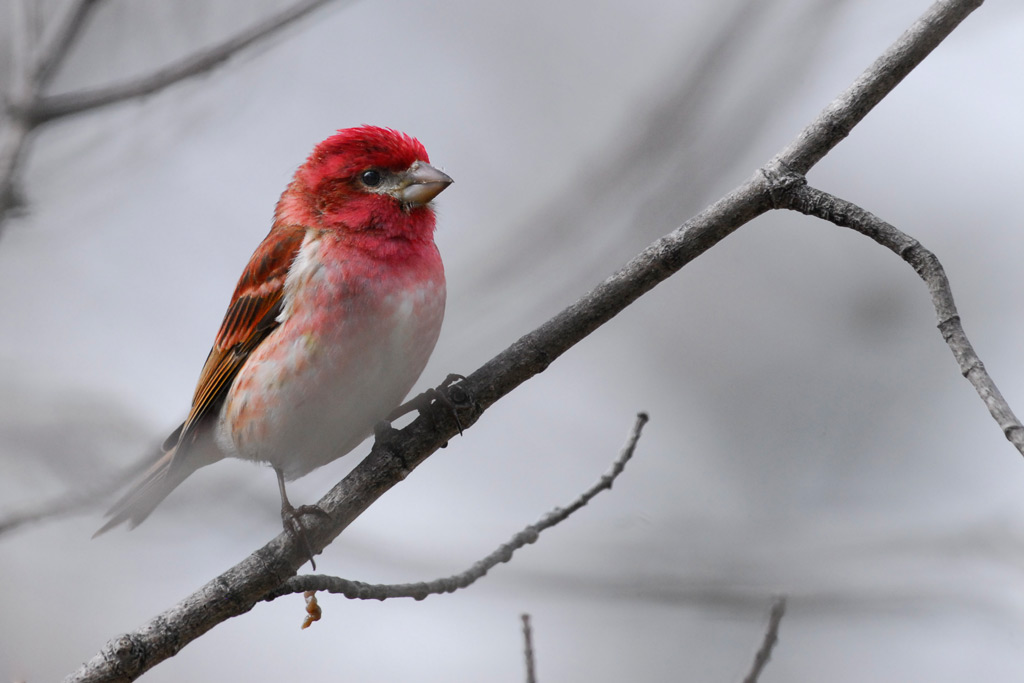

:max_bytes(150000):strip_icc()/house-finch-0350f6317cb2437ca12864f226e7a697.jpg)
Diet and Foraging HabitsĬommon Redpolls eat small seeds from trees such as birches, alders, and conifers. The amount of Redpolls in the United States as well as the locations they spread to vary depending on the year. This species is irruptive and on years when food is scarce in the North, they expand farther into the United States and in greater numbers. In winter, they migrate south into Southern Canada and the Northern United States. RangeĬommon Redpolls breed in the extreme Northern parts of Canada and Alaska as well as Southern Greenland. Females and immature birds do not have noticeable red wash but do have dark streaking on their underside and flanks. Males have a rosy wash on their chest and flanks along with some streaking on their sides.
Show me a purple finch Patch#
They have a brown back streaked with cream, black above and below their bill, and a red patch on their head. The Common Redpoll is a compact finch species with a small, stubby, pointed yellow bill. Finch feeders with nyjer, thistle, or sunflower seeds are great attractants for this species. Search for this species in fields with tall weeds and grass, both deciduous and coniferous forests, parks, and of course backyards. In their native range, American Goldfinches are plentiful and easy to find. American Goldfinches typically feed in flocks (with some flocks becoming quite large) and will also feed alongside other finch species such as Common Redpolls, and Pine Siskins. Some of their preferred seeds are sunflower and nyjer. Diet and Foraging HabitsĪmerican Goldfinches have a diet consisting of seeds. They are also found year round in many of the Midwestern, Northeastern, and Northwestern states. RangeĪmerican Goldfinshes can be found throughout most of the United States with the species following a typical migratior path of traveling south in winter and north into Canada to breed in summer. Females also have less black on the top of their head. Females in breeding plumage are still bright yellow but not to the same degree as the males. In nonbreeding plumage, these birds are more dull with brownish bodies, a yellowish head, and black wings with white wing bars. Pairs may raise three or more broods each season.Nonbreeding plumage American Goldfinch Identificationĭuring the breeding months, American Goldfinches are extremely colorful with males having bright yellow covering most of their bodies, a black cap on their head, black wings, and a black partially forked tail. The young leave the nest after 12 to 15 days and may be fed by the male for about two more weeks, while the female starts a second clutch. The female then joins the male in bringing food to the young. The female broods the young for the first few days after they hatch, and the male continues to bring food. The female incubates 4 to 5 eggs for 13 to 14 days while the male brings her food. The female builds most of the nest, which is an open cup of grass, weeds, twigs, leaves, and rootlets, lined with feathers and other fine material. The first requirement is a solid base with some overhanging material. Nests may also be located in conifer trees, hanging planters, and old nests of other birds. Ivy growing on buildings or trees creates many nesting sites. They choose a wide variety of nesting sites, and will nest in man-made objects such as window ledges and holes in buildings. House Finches are monogamous, and pairs tend to form while the birds are in their winter flocks. The variation in color is related to diet. Many but not all males reach mature plumage in their first year. There is considerable color variation among males, from pale yellow, to orange with bright red, this being the most common. Like most finches, they have notched tails.

House Finches have longer tails and appear more slender overall, and also have slightly curved bills, in contrast to the straight bills found in the other two species. They lack clear white stripes on their heads. The breast streaks do not converge in a central spot as on many sparrows. Female House Finches have blurrier streaks and grayer undersides than the other two species. This helps to differentiate it from the other two. The House Finch, the most common and widespread of the three, typically has a red head, breast, and rump, but does not have red coloring on its brown back or wings. All three species are streaked, and the males of all three have red plumage. The House Finch is closely related to the Cassin's Finch and the Purple Finch, and in fact, there are places in Washington where all three species can be found.


 0 kommentar(er)
0 kommentar(er)
